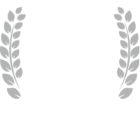Classification and Guidelines:
Simonneau G, Montani D, Celermajer DS, et al. Haemodynamic definitions and updated clinical classification of pulmonary hypertension. Eur Repir J. 2019;53(1). The 6th World Symposium on Pulmonary Hypertension proposes a new threshold of mPAP of 20mmHg as the upper limit of normal value.
PMID: 30545968
Free Full Text
Klinger JR, Elliott CG, Levine DJ, et al. Therapy for pulmonary arterial hypertension in adults: update of the CHEST guideline and expert panel report. Chest. 2019;155:565-586. This is a timely update to the 2014 guideline that summarizes the indications for each of the many therapeutic classes based on severity of symptoms, vasoreactivity, and prior treatment. There is a new emphasis on earlier use of combination therapy.
PMID: 30660783
Galie N, Humbert M, Vachiery JL, et al. 2015 ESC/ERS Guidelines for the diagnosis and treatment of pulmonary hypertension: The Joint Task Force for the Diagnosis and Treatment of Pulmonary Hypertension of the European Society of Cardiology (ESC) and the European Respiratory Society (ERS): Endorsed by: Association for European Paediatric and Congenital Cardiology (AEPC), International Society for Heart and Lung Transplantation (ISHLT). Eur Heart J 2016;37(1):67-119. This consensus document is still included as it contains recommendations on diagnostic evaluation.
PMID: 26320113
Free Full Text
Diagnosis:
Arcasoy SM, Christie JD, Ferrari VA, et al. Echocardiographic assessment of pulmonary hypertension in patients with advanced lung disease. Am J Respir Crit Care Med 2003; 167:735-40. The cardiology literature indicates echocardiography-derived estimates of pulmonary artery pressures are accurate. This study found 52% of echo estimates were inaccurate (off by > 10 mmHg) in 166 lung transplant candidates and the difference was > 20 mmHg in 28%. In patients without hypertension, echo was more likely to overestimate pressures while in patients with pulmonary hypertension; it was as likely to over- as underestimate. Accuracy and ability to obtain an estimate varied with the underlying disease.
PMID: 12480614
Fisher MR, Forfia PR, Chamera E, et al. Accuracy of Doppler echocardiography in the hemodynamic assessment of pulmonary hypertension. Am J Respir Crit Care Med 2009; 179:615-21. This prospective study of 65 patients undergoing right-heart catheterization for the diagnosis or management of pulmonary hypertension extends the findings of Arcasoy et al. above to patients without end-stage lung disease. Echo results over- or underestimated pulmonary artery pressure by > 10 mm Hg 52% of the time. The majority of patients had pulmonary arterial hypertension (WHO Group 1).
PMID: 19164700
Free Full Text
Treatment of pulmonary arterial hypertension:
Pulido T, Adzerikho I, Channick RN, et al. Macitentan and morbidity and mortality in pulmonary arterial hypertension. N Engl J Med 2013; 369:809-18. Unlike previous therapeutic trials, this placebo-controlled RCT is noteworthy for using a primary composite endpoint which included death, atrial septostomy, lung transplantation, initiation of treatment with intravenous or subcutaneous prostanoids, or worsening of pulmonary arterial hypertension. The composite endpoint occurred in 46.4% of the placebo group vs. 31.4% in the higher dose of macidentan. Macitentan carries lower risk of hepatotoxicity compared to bosentan.
PMID: 23984728
Free Full Text
Galiè N, Barberà JA, Frost AE, et al. Initial use of ambrisentan plus tadalafil in pulmonary arterial hypertension. New Engl J Med 2015: 373:834-844. This randomized trial is novel for focusing on the role of upfront combination therapy in symptomatic treatment-naive patients. Patients received ambrisentan and tadalafil alone or in combination. The primary outcome (a composite of death, hospitalization for worsening PAH, disease progression, or unsatisfactory long-term clinical response) occurred in 18% of the combination group vs 31% in the pooled monotherapy group (hazard ratio 0.50, p < .001). This was driven by a decrease in hospitalization. There was no mortality difference or change in WHO functional class.
PMID: 26308684
Free Full Text
Waxman A,Restrepo-Jaramillo R, Thenappan T, et al. Inhaled treprostinil in pulmonary hypertension due to interstitial lung disease. New Engl J Med. 2021; 348:325-34. RCT of 326 patients with pulmonary hypertension and ILD found inhalation of treprostinil qid resulted in a 31-meter difference in the 6 minute walk (the primary study outcome), improving by about 20 meters in the intervention group vs. 10 meter decline in controls (minimally important clinical difference is 30 meters). The accompanying editorial notes short trial duration (16 weeks), lack of improved quality of life, missing outcome data, and need to assess hospitalization and mortality as reasons for further trials.
PMID: 33440084
Hoeper MM, Badesch DB, Ghofrani HA, et al; STELLAR Trial Investigators. Phase 3 trial of sotatercept for treatment of pulmonary arterial hypertension. N Engl J Med. 2023; 388:1478-1490. Sotatercept, which inhibits cellular proliferation, improved the primary endpoint of 6-minute walk distance by 34 meters in this 24-week RCT of 323 patients. Of note, sotatercept was added to patients’ baseline PAH regimens for the study.
PMID: 36877098
Thromboendarterectomy for chronic thromboembolic disease:
Mayer E, Jenkins D, Lindner J, et al. Surgical management and outcome of patients with chronic thromboembolic pulmonary hypertension: results from an international prospective registry. J Thorac Cardiovasc Surg 2011;141:702-10. This description of experience within an international, multi-institutional setting offers a comparison with the San Diego experience. Preoperative PVR was somewhat lower in this group, circulatory arrest time was the same, and one-year mortality was 7%. An interesting discussion, including a member of the San Diego group, follows the references.
PMID: 21335128



